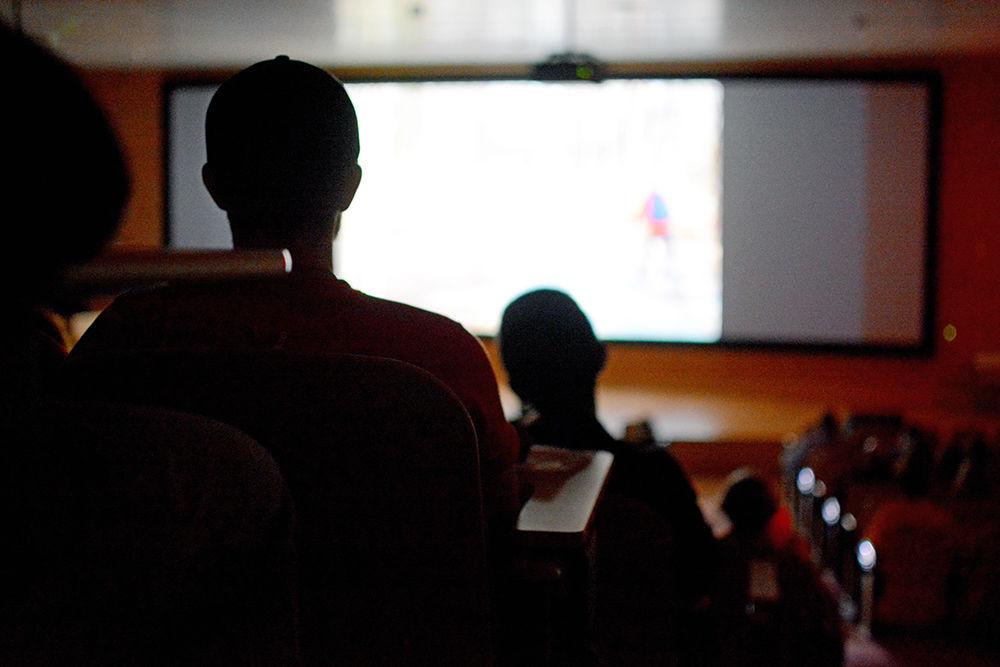On Tuesday, the Hunt Library Auditorium hosted NC State’s 8th Annual Student Short Film Showcase. The event presented a number of student short films submitted from both the College of Design and the College of Humanities and Social Sciences. Student filmmakers and animators delivered an impressive and entertaining variety of creative storytelling techniques and ideas, none of which exceeded four minutes lengthwise.
Each film fell under one of three categories, of which the guidelines and technological requirements varied. These categorical themes and requirements were set by separate professors with different backgrounds and were based around their particular courses.
The first category showcased was professor Sarah Stein’s “Introduction to Films.” This category required that students use natural lighting and that their films capture or convey some type of message or story without using dialogue. The results varied in theme, tone, genre and location. A number of these films were shot around familiar campus landmarks and buildings, while others were shot in public streets, dorm rooms or the woods.
Christina Dietz, a third-year studying English and arts studies, actually directed her film “Memory” in a relative’s residence, designed by the relative himself. A standout moment of her film incorporated an intentional shift in the color palette of the lighting. According to Dietz, this was accomplished using tri-fold display boards that reflected and filtered the light entering the room. This technique added a noticeable depth to the film’s already deeply emotional tone.
“The goal of this film was to show someone learning to move on from their loss,” Dietz said. “This story is very important to me, and I’ve learned through making it that it’s important to be passionate about the story you’re telling and the film you’re making. It really shows when you’re passionate about it.”
Other filmmakers in this category applied methods designed to transition their frames in sync with their background songs or music. This allowed for cinematic paces ranging from ecstatic to uplifting, somber to electrifying, and mellow to chillingly terrifying.
One such film, “Flower Girl,” maintained a bizarre and subtly maniacal tone, with frames flashing between scenes of blissful ignorance and disturbing laughter. Emily Goodwin, a recent NC State graduate in film studies, set her eerie short film in a deceptively cheery meadow.
“My favorite genre of movies is probably horror or thriller,” Goodwin said. “Those are my favorites. I was really interested in the juxtaposition you often find in them between innocence and depravity, so I wanted a chance to explore that a little bit more through the character in my film.”
There were two references to the TV show “The Twilight Zone” as both an inspiration and an interpretation. Jeremy Wesonga, a fourth-year studying communication, referenced “The Twilight Zone” in his interpretation of the steadily mind-bending short film “Tick Tock,” in which he starred. His fell into the second category of short films, headed by professor Jim Alchediak and acquainted with his “Introduction to Videos” course.
Students in this category had a bit more freedom in their films’ formatting, but these focused more on telling stories than exploring messages or ideas. Ami Vaughan, a fourth-year studying communication and film studies, said she filmed a stoplight separately from the less busy side-road where most of her film “Love at First Stoplight” took place. This was done to create the illusion of the actors actually waiting at a stoplight, which made the hilariously plot-twisted scenario play out much more authentically.
The last category was centered on animations, as per professor Marc Russo’s “Introduction to Animations” course. As the name suggests, these films had to include a type of animation or visual effect one way or another. Some of these films were animated entirely, such as “This Is About You,” a fluidly vivid fencing animation which additionally seemed to represent the pitfalls of romance. Others combined live acting with visual effects, such as “Nightmare,” which had the protagonist confront a monstrous version of herself.
One short film that stood out in this category was an impromptu “movie trailer” for an unfinished 3-D animation project. Viewers were urged to keep an open mind as to what the complete idea actually was. Nevertheless, the trailer for “What Goes Up” seemingly accomplished that on its own. Its story of a genetically enhanced pug on a quest for his toy in a “science gone wrong” lab setting made for a straightforward enough narrative and an intriguing concept with lots of potential.
Congratulations and applause were delivered accordingly. The student filmmakers in attendance for the showcase took to the auditorium stage, category by category, for general questions and comments from the audience. A similar, subsequent showcase has been planned for the spring.













